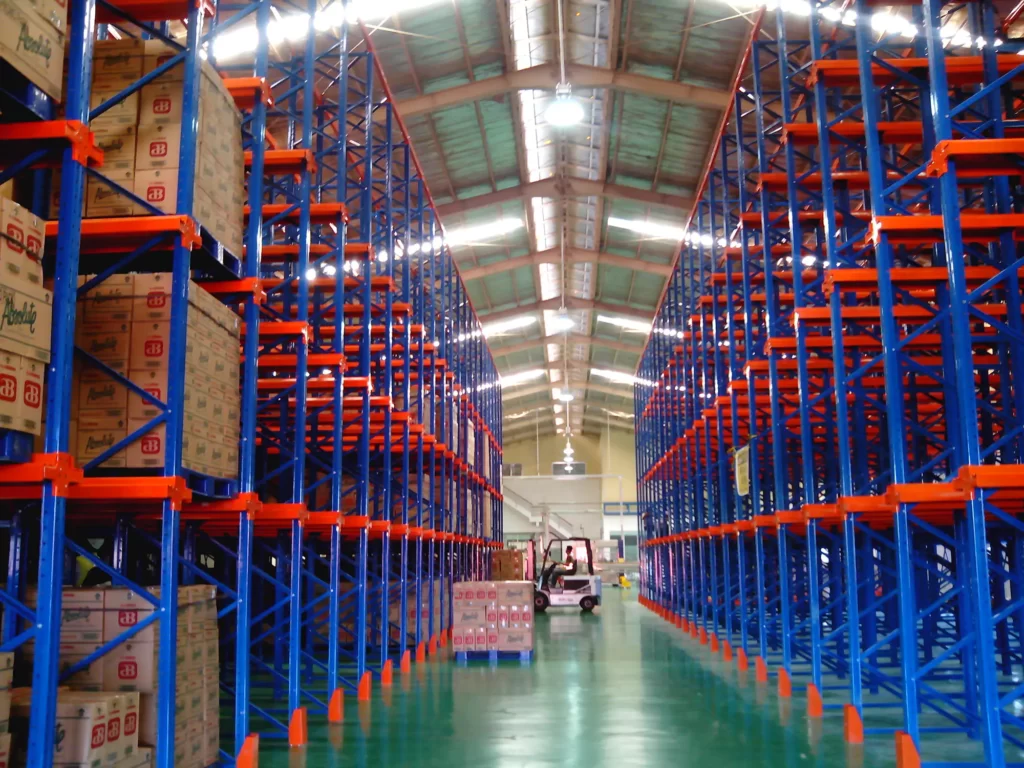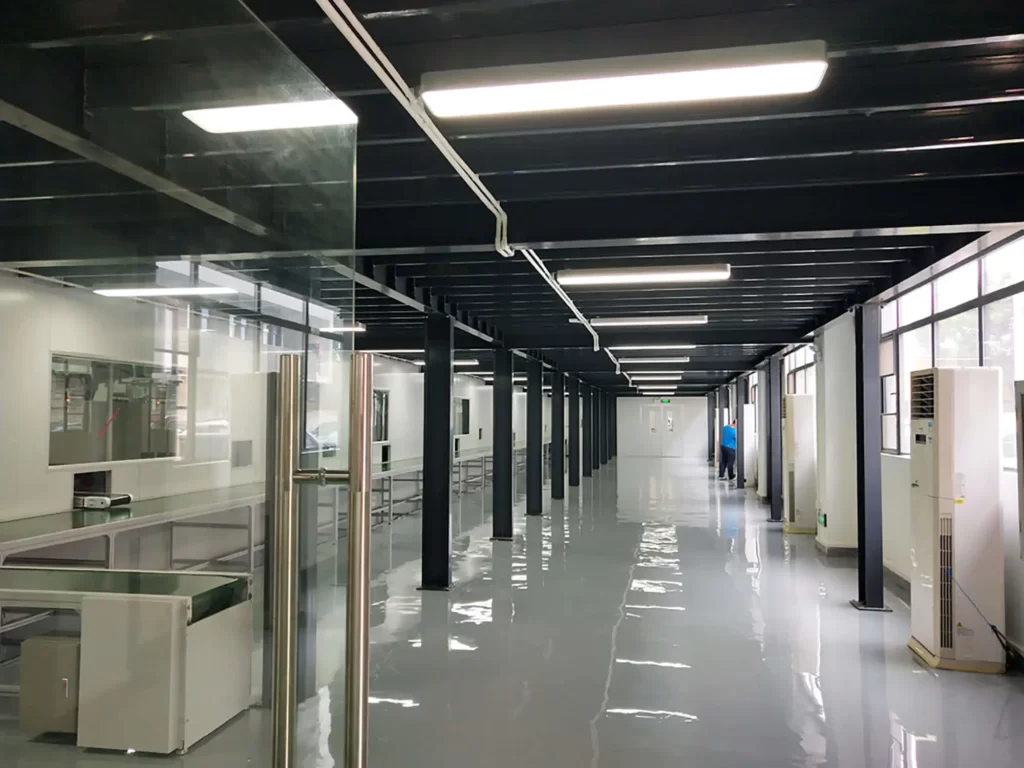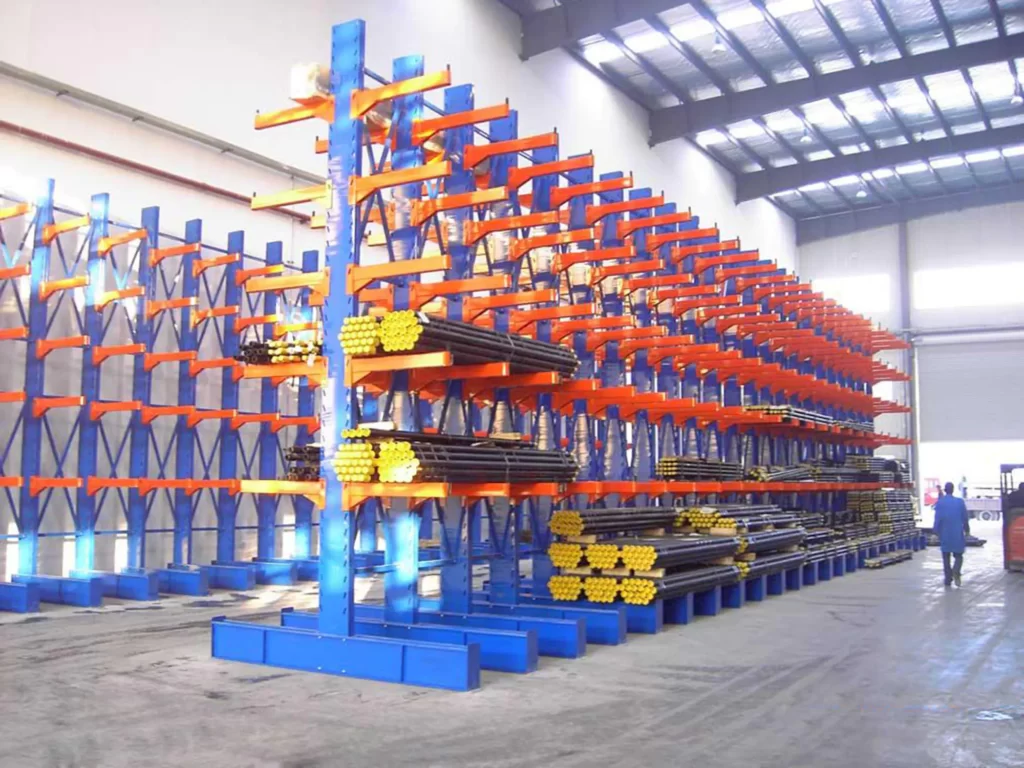Warehouse storage systems are solutions for arranging products in an inventory facility. Depending on their specific qualities and demand levels, you can store items on the floor or use storage methods.
Choosing the proper warehouse storage system is an important decision for any business. Essentially, the choice you make will significantly impact the management of warehouse operations.
To determine which approach is ideal for your organization, criteria like available space, type and number of items held, packaging utilized, and processes must be considered. This piece will help you explore everything about warehouse storage systems, from their definition to how many types there are and how to make an educated selection.
The ABCs Of Warehouse Storage Systems
Warehouse storage system is a collection of physical components intended to help you make the most use of your warehouse space. More precisely, it ensures optimal utilization of your warehouse space by enhancing organization and facilitating effortless access to all of your items.
When correctly implemented, warehouse storage systems will address all of your operation’s particular demands and allow warehouse personnel to do their tasks safely and effectively, thus significantly improving your warehouse’s productivity and saving costs.
Why Are Warehouse Storage Systems So Important?
Choosing and utilizing the correct warehouse storage system can bring about numerous benefits for your warehouse operations. This section will delve into the advantages of these inventory solutions to elucidate their significance.
Maximizing Space
Depending on the scale of your organization, you may have a limited area to work with. Warehouse storage systems ensure that you make the most of the square footage you have available, no matter how little it is.
You will automatically make full use of your storage space when your warehouse is well-organized. In contrast, improperly kept inventory will result in a lot of wasted and unutilized space. That is why it’s critical to have a storage system that leverages not only horizontal but also vertical storage.
Moreover, it is usually considerably simpler and more cost-effective to alter your existing storage space than to obtain new real estate. With this in mind, optimizing potential space and effectively holding merchandise are a must for your business.

Augmenting Safety
Never underestimate the significance of warehouse safety! Without the proper safety protocols in place, your team’s health and well-being will be jeopardized. Fortunately, warehouse storage solutions can augment the safety of your inventory facility, including your staff, goods, and any equipment you’re employing.
Today’s warehouse storage is built and manufactured to be very secure. In fact, these systems are strong and durable enough to hold many tons of goods at once.
Furthermore, you can even reinforce them with heavy-duty guarding equipment, such as dividers, rack guards, and wire mesh decking. With these auxiliary tools, you can avoid further injuries and many legal concerns arising from collisions or equivalent incidents.
Improving Efficiency And Flexibility
By employing the correct storage solution, your warehouse crew can locate the goods they need much more quickly and efficiently. This is primarily due to the fact that your warehouse layout is considered when planning and choosing storage solutions. In other words, you can design your facilities to meet your specific storage demands.
Additionally, this flexibility enables you to make the greatest use of your available space while improving organization, since you can choose the precise storage systems best suited for your inventory facility. This ensures your products are kept in locations where they can be found as quickly as possible, which is a great gain for your whole crew.
Some storage solutions, such as mezzanines, allow for disassembly, relocation, and rebuild. This feature is useful for facilities, as these systems bring about the versatility to meet the demands of each particular company. If the storage solution is inefficient in one place, it might be tried in another place before settling on an optimal site.
Cost-Saving
With more storage capacity and versatility, you can obviously increase efficiency while saving expenses. Moreover, your firm will function more smoothly, resulting in faster order fulfillment and happier customers. This is particularly beneficial for businesses that rely on peak holiday seasons.
Top 8 Must-Know Types Of Warehouse Storage Systems
Now that you have a solid foundation in warehouse storage systems, it’s high time to delve into some of the most popular types currently available on the market. Each type has its unique benefits that might satisfy your specific inventory demands.
#1: Floor Storage
Often known as block stacking, floor storage is the most basic warehouse storage solution that involves placing products directly on the facility floor. The common practice is to place high-turnover products in a designated warehouse area to make it simpler to find them during the order picking process.
One benefit of floor storage is its cost-effectiveness since this warehouse storage approach doesn’t rely on racks or advanced systems. Moreover, it’s very simple to set up this storage solution, as all you need to do is put items on the floor.
However, businesses do not favor this solution since it needs operators to go great distances to seek needed items while making orders or refilling inventory. Thus, it wastes available floor space and poses a significant danger of collapse.
#2: Static Shelving
Unlike floor storage that needs no holding structures, static shelving comprises components that are intended to remain stationary and occupy a continuous location throughout your warehouse. Static shelves are ideal for relatively lightweight items, making them suitable to store goods with frequent replenishment cycles.
However, please note that this warehouse storage system is incompatible with forklifts and other gear. Instead, your warehouse personnel must choose, box, and sort items on static shelves by hand, adding to their workload.
While this is not strictly a reason to avoid static shelving, it is something to consider as you assess your storage choices and select which system is best suited to your inventory requirements.
#3: Mobile Shelving
In contrast to static shelving, mobile shelving employs movable bases that provide access to several shelves from a single aisle. These bases glide autonomously and laterally over tracks inserted directly into your warehouse floor. Oftentimes, they’ll include motors or control systems to render the shelves’ smooth movements.
The major advantage of this warehouse storage system is that it minimizes the overall number of lanes while enabling you to store more pallets. Although it does all of this in very compact areas, this system still maintains direct access to your chosen items. Simply said, mobile shelving systems can store more products in less space.
In addition, this technique is particularly useful for refrigerated or cold storage warehouses. That’s why so many food enterprises choose this strategy for their facilities. However, a small note is that you can apply mobile shelving to literally any temperature environment.
#4: Pallet Racks
Pallet racks are the most widely used warehouse storage method. Whenever you look at images of busy warehouses, these structures are often the focal point of operations there.
Most pallet racking systems are built of metal or wood and help make the most of available space in your warehouse, keep personnel and cargo safe and secure, and increase warehouse throughput.
You should be aware that pallet racking is a broad term that encompasses many subcategories. Warehouses will often choose a pallet racking design based on its weight capacity, flexibility, and whether it needs a modification to the current infrastructure. Typically, there are three groups of pallet rackings as follows:
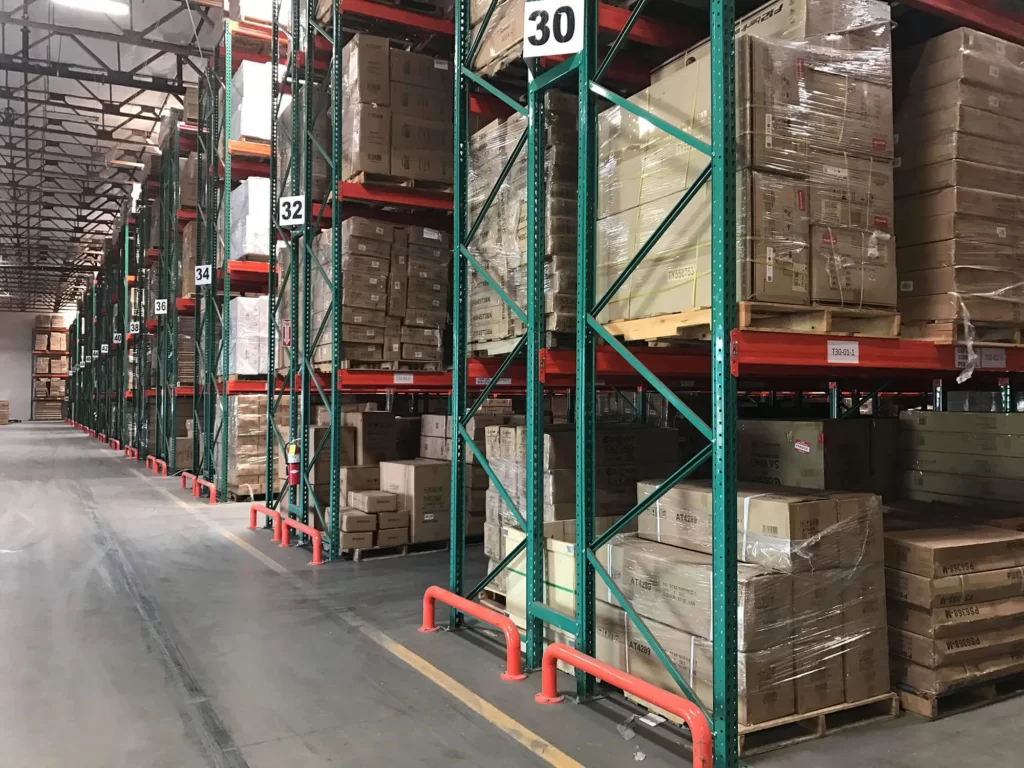
Pallet Racks Offering Direct Access
This first pallet rack subtype allows merchandise to be taken straight from the working aisles and ensures complete access to all items, making storage and order preparation easier. These racks need large aisles to allow warehouse personnel to insert and retrieve products using forklifts.
The following are the two most popular warehouse storage systems for this subtype:
- Typical pallet racks: These are one of the most common systems found in warehouses because of their adaptability, affordability, and ease of installation. Pallet racks can be single-deep or double-deep, with one pallet beneath the other in each slot. Warehouse staff can use any form of handling equipment on these racks, provided that the aisle is broad enough.
- Mobile pallet racks: As the name suggests, these pallet racks are mounted on movable platforms. When the operator uses radio controls to open a working aisle, the cascade opens, enabling workers to enter and handle items in their designated areas. This technique reduces the aisle number, increases storage space while preserving direct access to each item.
Pallet Racks For High-Density Storage
In contrast to pallet racks offering direct access, these high-density storage systems optimize the utilization of warehouse surface area and offer increased storage capacity. They reduce the number of aisles through which the handling equipment operates.
When storing a small number of SKUs on numerous pallets, pallet racks for high-density storage are the preferred option. Here are some typical rack types belonging to this subcategory:
- Push-back racks: These racks’ levels are established by free-rolling, slightly inclined carriages or wagons. Their operation is straightforward: as pallets are filled, those that are already laden are pushed to the rear. Conversely, as one pallet is removed, the pallets stored behind are propelled forward by gravity.
- Drive-in racks: Warehouse staff is required to utilize handling equipment to penetrate these racks. They are often constructed with rails and positioned along the aisles on which pallets are put.
- Gravity pallet racks: Pallets automatically descend from the highest to the lowest lane of these racks, which are composed of slightly inclined lanes equipped with rollers. By having the initial pallet enter the lane and the last pallet exit, this warehouse storage system ensures an ideal product turnover.
Pallet Racks For Bulky Storage
Long or unusual items like tires, pipelines, reels, etc. and special commodities need distinct warehouse storage systems. In such situations, organizations typically utilize the following types:
- Racks for drums and reels: This rack type includes accessories for storing and handling cylindrical loads or items wrapped on reels, such as cables and electric lines. These accessories are adaptable to the items’ quality, size, and function.
- Cantilever racks: These racks are made up of load-bearing arms that are fixed to columns. These arms can support objects of varied lengths. One of the distinguishing advantages of cantilever racks is that they offer direct access to each hung item, which simplifies product handling.
#5: Multi-Tier Racks
These warehouse storage systems maximize your warehouse’s height by dividing it into multiple levels, which your staff have to reach via stairs. As a result, you can significantly improve storage capacity for your facility while still providing your staff with convenience and direct access to all SKUs they need.
Multi-tier racks are useful for a wide range of applications. This storage solution is ideal for big inventory numbers with tiny unit sizes. Furthermore, it works well with lightweight items that require manual picking.
These racks also work well with warehouses that have limited floor area but plenty of accessible height. And, since each warehouse has its own layout and design, multi-tier racks provide incredible flexibility and the ability to add or remove levels dependent on your inventory requirements.
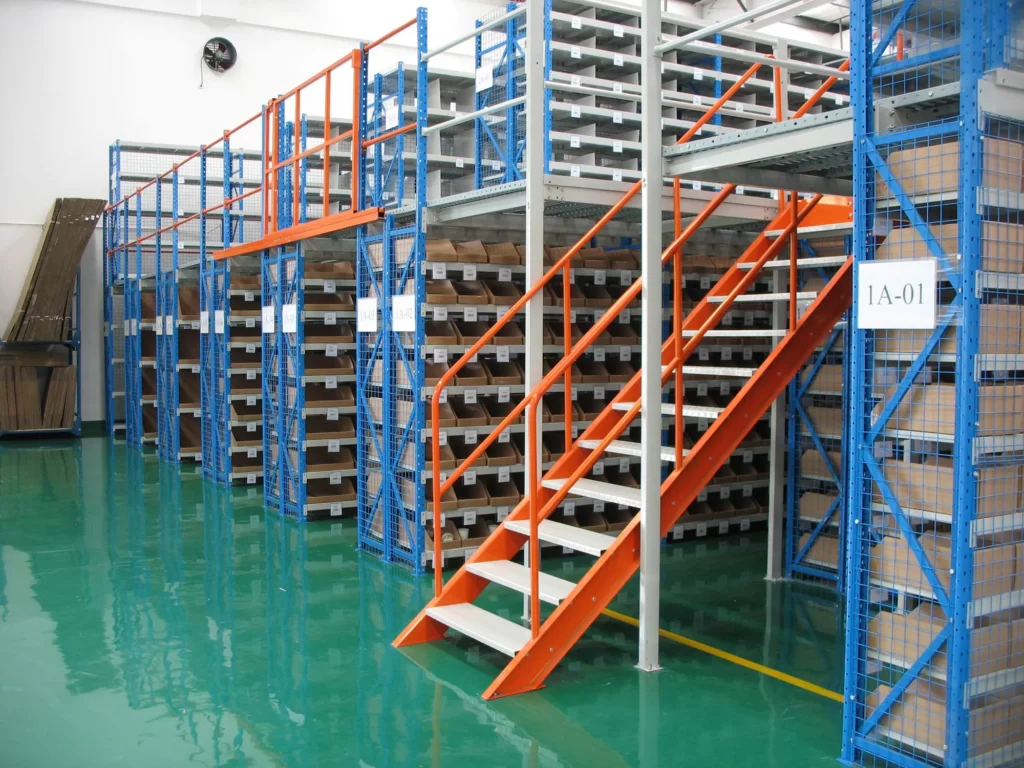
#6: Wire Partitions
When your warehouse demands isolation without the need to develop a separate area, then installing wire partitions might be the best answer. These warehouse storage systems are not only economical but also allow you to enhance the premises’ security.
Specifically, although your warehouse is intended to keep items safe, certain products need more protection than others. In these situations, wire partitions offer an additional shielding layer. Their easy installation into a cage-like structure enables you to securely store dangerous chemicals, bulky items, or keep animals away from your area.
What makes wire partitions stand out is their adaptability. You can effortlessly expand, remove, or rearrange these wire dividers without having to destroy existing walls and install new ones. This benefit allows you to remain ahead of the changes that your firm will inevitably face.
#7: Mezzanine Flooring
Often built from metal, mezzanine flooring is a free-standing, raised structure that adds a floor between the warehouse’s ground level and its ceiling, thus boosting storage space. You can utilize this structure as your second or even third level above your primary warehouse space.
However, this invasive construction can be pretty costly, so you’ll certainly need a budget that allows for it. Despite its high expenditure, mezzanine flooring provides many rooms for customization, such as conveyors, lighting, and elevator systems.
Another advantage is that installing a mezzanine allows you to improve storage capacity without the need to expand horizontally. Obviously, it is a more cost-effective option, as investing in additional buildings or warehouse storage areas is much more expensive.
#8: Automated Storage And Retrieval Systems (ASRS)
By combining digital, robotic, and racking components, AS/RS creates a customized automated warehouse that can handle a wide range of commodities, all managed by computed automation software.
The cool feature about AS/RS is that it has no size limitations and may handle small, big, or multi-site warehouses via the use of multiple automation technologies and vehicles.
This advanced warehouse storage system is especially prevalent in warehouses that have limited space but must process large goods quantities. Like pallet racks, AS/RS is also an umbrella term that contains a plethora of subcategories. The following part will walk you through some of the most popular names:
- Unit-load AS/RS: It handles full pallet loads and is suitable for storing larger, heavier items. The system automatically stores and retrieves pallets from defined locations within a high-bay racking structure.
- Mid-load AS/RS: Designed for handling cases or totes, it operates with medium-sized loads. This warehouse storage system uses specialized storage/retrieval machines to access loads stored on racks. It offers higher throughput than the unit-load solution.
- Mini-load AS/RS: This type of automated storage and retrieval system is ideal for handling small totes, trays, or bins within a compact footprint. Typically, mini-load AS/RS utilizes cranes or vehicles to access loads stored on high-density racking, making it ideal for small piece picking operations.
- Shuttle-based AS/RS: This storage system utilizes autonomous vehicle shuttles that travel on rails within dense racking to store and retrieve loads. Shuttle systems provide high storage density and throughput for unit, case, or tote loads.
- AMR-based AS/RS: By leveraging autonomous mobile robots, or AMRs, to transport loads between staging areas and storage locations, AMR-based AS/RS can navigate freely, offering top-notch flexibility.
- VLM-based AS/RS: VLM refers to vertical lift modules. This storage solution comprises enclosed vertical racking structures with an integrated elevator to store and retrieve totes or trays.
- Carousel-based AS/RS: With horizontally rotating carousels, this AS/RS system brings stored items to an operator pick window. It provides high-density storage and ergonomic access for piece picking operations.

Essential Tips To Maximize Warehouse Storage
Along with warehouse storage systems, your company may employ other tools and techniques to optimize inventory procedures. In this part, you will discover the top three strategies to help maximize warehouse storage.
Prioritizing Product Management
Product management is inextricably related to your warehouse activities. With a warehouse management system, you’ll have better control over your product levels and ensure that you purchase the correct items at the right time, allowing you to easily satisfy client demands.
And having all of the relevant SKUs in stock and ready for delivery will make your warehouse team’s job easier. They will no longer be hunting for out-of-stock commodities but will instead find what they need with more precision and efficiency.
Furthermore, implementing a warehouse management system will boost customer satisfaction in the long run since it allows your warehouse to operate with quicker shipment times, lower delivery costs, and higher order accuracy. In summary, clients get precisely what they purchased, on time, and at a lesser cost than your rivals.
Regularly Auditing Warehouse Operations
How can you expect your company to flourish if you aren’t paying attention to what’s going on in the warehouse? Continuously auditing your warehouse operations allows you to spot bottlenecks in order fulfillment processes, track staff’s productivity, and find areas for development.
This practice allows you to search for strategies to improve your warehouse storage, such as combining several shelving techniques or automating certain processes with AS/RS. Inventory loss, picking accuracy, and the number of accidents per year are some of the finest key performance indicators for auditing warehouse performance.
Integrating Warehouse Management Software
Abbreviated as WMS, warehouse management software serves as the basis for other technologies that your inventory facility may need. Today’s WMS has great versatility and can assist with all your warehouse tasks, from location management to selecting, packaging, and fulfilling client orders.
Another advantage of integrating this software is that it provides comprehensive data analytics and visualization capabilities. It also offers superior inventory monitoring for both your internal team and external client accounts.
In other words, with WMS, you can access real-time insight into what your items are doing, allowing you to make better, more educated choices about replenishment, storage, and shipping. Overall, WMS is essential for operating a smooth and effective facility with well-organized inventory that maximizes profits for your company.
Quick Recap On Different Types Of Warehouse Storage Systems
So far, you have accumulated quite a lot of knowledge about warehouse storage systems. If you’re a bit overwhelmed, feel free to utilize the following recap table. It is a shortcut for whenever you want to refresh your memory about this topic.
| Warehouse Storage Systems | Key Takeaways |
| #1: Floor Storage | This is by far the simplest form of storage, involving stacking loads directly on the floor. It offers low density and easy access but takes up considerable floor space. |
| #2: Static Shelving | Free-standing shelving units provide organized storage for smaller items like totes or boxes. These shelves have predetermined locations but allow easy manual access. |
| #3: Mobile Shelving | Compact storage achieved by eliminating fixed aisles. These shelving units are mounted on rail systems and can be moved laterally to create temporary aisles when needed. |
| #4: Pallet Racks | An upright frame with horizontal beams allows for high-density storage of palletized loads. Racks come in various configurations, like drive-in, push-back, and live pallet racks. |
| #5: Multi-Tier Racks | Maximize vertical space by stacking pallet racks on multiple levels with working aisles between each tier. Typically serviced by lift trucks or stacker cranes. |
| #6: Wire Partitions | Wire mesh walls subdivide open floor space into segregated storage areas, useful for separating dissimilar items or creating pick zones. |
| #7: Mezzanine Flooring | These elevated platforms add a supplementary floor level above existing floor space, expanding storage capacity and operational areas. |
| #8: Automated Storage and Retrieval Systems (AS/RS) | These solutions are computer-controlled storage systems using autonomous vehicles or cranes to automatically place/retrieve loads from high-density racking with minimal human intervention. |
Conclusion
As you can see, there are a variety of warehouse storage systems available, and as time passes, these systems will only get more lightweight, cost-effective, and innovative. Thus, choosing a suitable solution is critical for every company since it has a direct influence on warehouse throughput.
This article has equipped you with a solid foundation in warehouse storage systems, as well as their importance for your business. Moreover, you’ll have access to techniques to optimize warehouse storage. Hopefully, all the knowledge will help you make a more informed decision. Thanks for reading!




